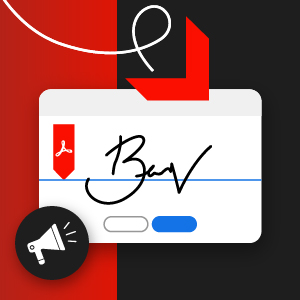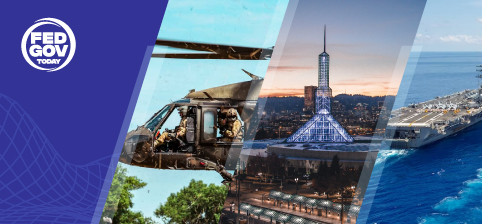At the start of March 2022, the IRS launched the Taxpayer Experience Office (TEO) to improve taxpayers’ experience with digital tools, such as fully transparent accounts, expanded e-File and payment options, digital signatures, and secure two-way messaging. TEO is working with their IT, digitalization, and policy shops to identify projects that will produce the most modernization, according to agency officials. The four offices are meant to coordinate the expedition of either internal or external processes, depending on the ROI, with TEO handling the former and the Enterprise Digitalization and Case Management Office (EDCMO) the latter. “For its part, EDCMO focuses on taking paper processes digital where the cost savings are highest and the processing hours and employees in seats lowest”.[1] The main goal is to optimize business processes and technology, which normally begins with small digital transformations, but EDCMO already achieved a 178% ROI in its first year, which indicates a promising future for their endeavors.[1]
Opportunities in the Field of Digital Modernization
The IRS issued the first wave of job postings for more than 200 technologists back in March of 2022, as it plans to hire to continue modernizing IT. Positions range from entry-level to supervisory across system development, architecture, engineering, cybersecurity, IT operations, network services and customer support.
Desired skillsets are cloud, zero-trust security, low- and no-code enterprise platforms, machine learning and artificial intelligence, and NoSQL databases. The IRS faces a daunting, largely paper-based backlog of tax returns every year, so shifting to digital will help streamline to make these yearly processes run smoother and faster. As was the case with COVID-19 recovery, the IRS is also called upon to administer relief, like Economic Impact Payments and advance payments of the Child Tax Credit. They are also instances of processes that could be made more efficient by implementing digital solutions because of the quicker turnaround that those platforms provide in comparison to manual, paper-based ones.[1]
 Digital Signature Service Authorization and Adoption within Government Agencies
Digital Signature Service Authorization and Adoption within Government Agencies
The IRS is a notable example, but agencies within the Department of Defense are leaning into the trend of digital signature use as well. This initiative requires an effort in tandem from the industry side and the government side to achieve the necessary compliances for ensuring proper security across platforms. One of the main authorizations that these government entities and digital services must adhere to is the Federal Risk and Authorization Management Program (FedRAMP), which provides a standardized approach to security authorizations for Cloud Service Offerings. According to the FedRAMP Program Management Office, there are two ways to authorize a Cloud Service Offering (CSO) through FedRAMP—via an individual agency or the Joint Authorization Board (JAB). The authorization process involves selecting an authorization process, preparation, authorization, and then continuous monitoring as part of the main steps. There are currently 20 Cloud Service Providers (CSPs) under the status of “ready,” 96 “in process,” and 309 classified as “authorized” through the program. Digital signature solutions, being cloud-based services, must adhere to this type of authorization to be considered for use within many government agencies. As more agencies vouch for these services and work together with CSPs to secure certifications, more agencies, in turn, are also able to adopt them to achieve maximum efficiency.[2]
What Can Digital Signatures Help Accomplish?
Digital signatures greatly reduce the time spent during transactions. As noted across articles and input from the most successful signature providers featured on LinkedIn, they can greatly improve the day-to-day for businesses operating in a post-pandemic hybrid world, and the same benefits apply to government agencies.
Most notably, trusted digital signatures can help in the following:
Security: A digital signature confirms that all signers are who they claim to be, and it prevents retroactive alterations to the signed document or tampering in general.
Time: Signing a document with ink does not take any longer than signing with a digital signature, but the time it takes to move a wet signature document along to each recipient can take days or even weeks. In comparison, a digitally signed document can be delivered in minutes via email.
Collaboration: Working remote or employing physical distancing interfere with the ability to come together for document transactions. Even with the re-appearance of in-person operations, digital signatures allow quicker turnaround and provide the additional convenience of eliminating the need to convene in person.
The Environment: From the number of trees that go into printed sheets of paper to the amount of carbon emissions that can be saved, digital signatures are the green alternative to paper-based wet signatures.
Legality: Digital signatures uphold in legality across the US and globally, specifically by adhering to the E-Sign Act of 2000 and the Uniform Electronic Transactions Act (UETA).
Check out this on-demand webinar for more information on this series and how Adobe can support your organization’s digital transformation initiatives.
Resources:
[1] Nyczepir, Dave. “IRS Teams Old and New Working in Tandem on IT Modernization.” FedScoop, March 21, 2022. https://fedscoop.com/irs-teams-it-modernization-2022/.
[2] How to Become FedRAMP Authorized. Accessed July 5, 2023. https://www.fedramp.gov/.






